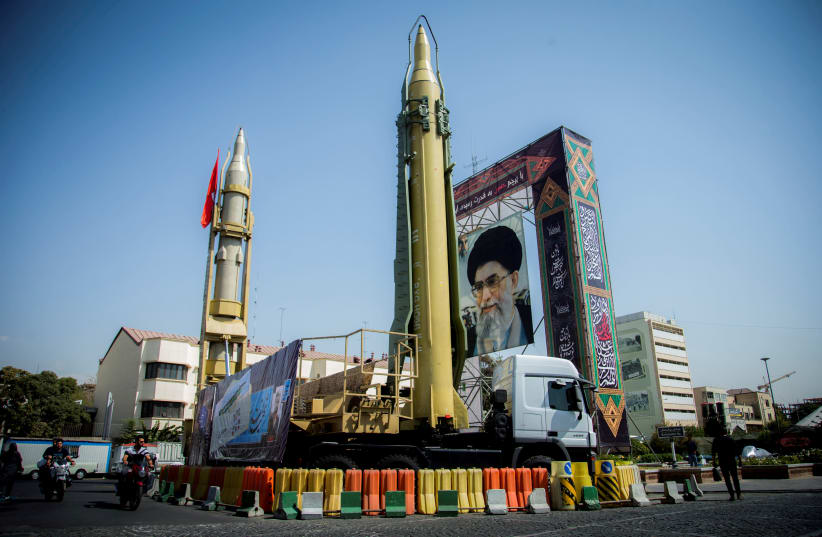Hatami said the latest Fateh missile – which has already been tested – will boost Iran’s defensive capabilities. He stressed that Iran would not stop enhancing its missile capabilities.“As I had promised the Iranian nation, I will spare no effort to boost the country’s missile capabilities and we will certainly increase our missile power every day,” Hatami said. “With a powerful, smart and up-to-date defense industry, we will be able to preserve peace and stability – and today, the enemies are fully aware of the Islamic Republic’s defense power. Be sure that the greater the pressures and psychological warfare against the great nation of Iran, our will to enhance our defense power in all fields will increase.”Fox News reported on Sunday that Iran’s Islamic Revolutionary Guard Corps (IRGC) fired a third-generation Fateh-110 last week in an anti-ship configuration from Iranian soil, crossing part of the Strait of Hormuz before impacting a desert test range 100 miles away.According to the report, the launch from the IRGC base in the southeastern Iranian city of Bandar-e-Jask was detected by US spy satellites as part of a naval exercise in the Strait of Hormuz.Iran is said to have conducted more than 20 missile tests since 2015, claiming they are legitimate and defensive in nature.Despite US sanctions placed on Iran last week meant to pressure Tehran over its military activity and ballistic missile program, Tehran continues to improve its missile arsenal.The Islamic Republic possesses more than 1,000 short- and medium-range ballistic missiles and has the ability to proliferate weapons to countries and non-state actors, such as Hezbollah on Israel’s northern border and Hamas in the Gaza Strip.On Monday, the Commander of the Iranian Army Ground Force Brig.-Gen. Kiomars Heidari said Tehran was ready and willing to provide weapons and other military equipment made in Iran to “friendly and brotherly countries.”“Today, the Armed Forces and the Army Ground Force are self-sufficient in all defense arenas and we can supply the friendly and brotherly countries with these defensive capabilities,” he was quoted by Fars News Agency as telling reporters in Tehran.Hezbollah’s arsenal of an estimated 130,000 rockets is comprised of mostly small, man-portable and unguided surface-to-surface rockets and missiles with ranges of between 10km-500km. The group also has several kinds of surface-to-air and land-to-sea missiles.Israel is concerned that Iran is not only trying to consolidate its grip in Syria, where it could establish a forward base to attack, but that it is trying to build an advanced weapons factories in Syria and Lebanon to manufacture GPS-guided missiles that could hit targets with greater accuracy.Israel has reiterated its view several times on any transfer of advanced weaponry to Hezbollah as a “redline,” and will work to prevent any such movement.While the IDF neither confirms nor denies the strikes, as is their policy regarding foreign reports on purported Israeli strikes, it has admitted to striking over 100 targets in Syria over the past five years. It is suspected of carrying out hundreds of others.فوری#ایران یک موشک جدید با نام #مبین رونمایی کرد.این موشک از نسل #موشک_فاتح است که دقیق ترین موشک ایران است. pic.twitter.com/MorYuzXWrH
— Mahdi Bakhtiari (@Mahdiibakhtiari) August 13, 2018
Iran unveils new short-range Fateh ballistic missile
Iranian defense minister says new stealth missile is agile and precise
